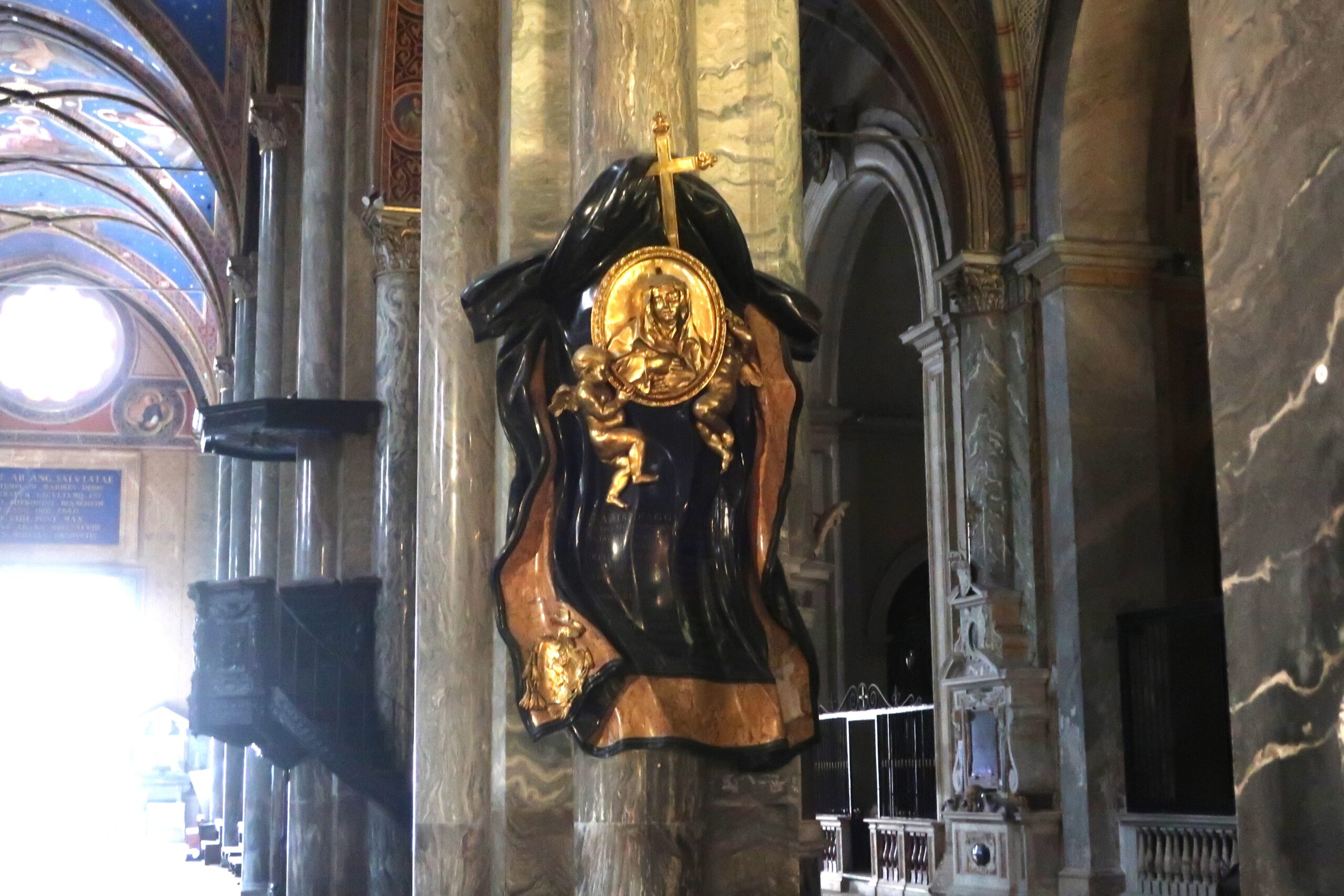(29) Bernini's "The Tomb of Maria Raggi" - Unique marble sculpture of Santa Maria Sopra Minerva Church.
I would like to introduce you to a previous article(27) Bernini's "The Ecstasy of Saint Teresa" - A masterpiece of Baroque art! The marvelous illusions of the Cornaro Chapel!"The Tomb of Maria Raggi," which Bernini worked on at the same time as "The Laws of Saint Teresa," which was introduced in
The "Tomb of Maria Raggi" is too unique in appearance to be called a "sculpture."
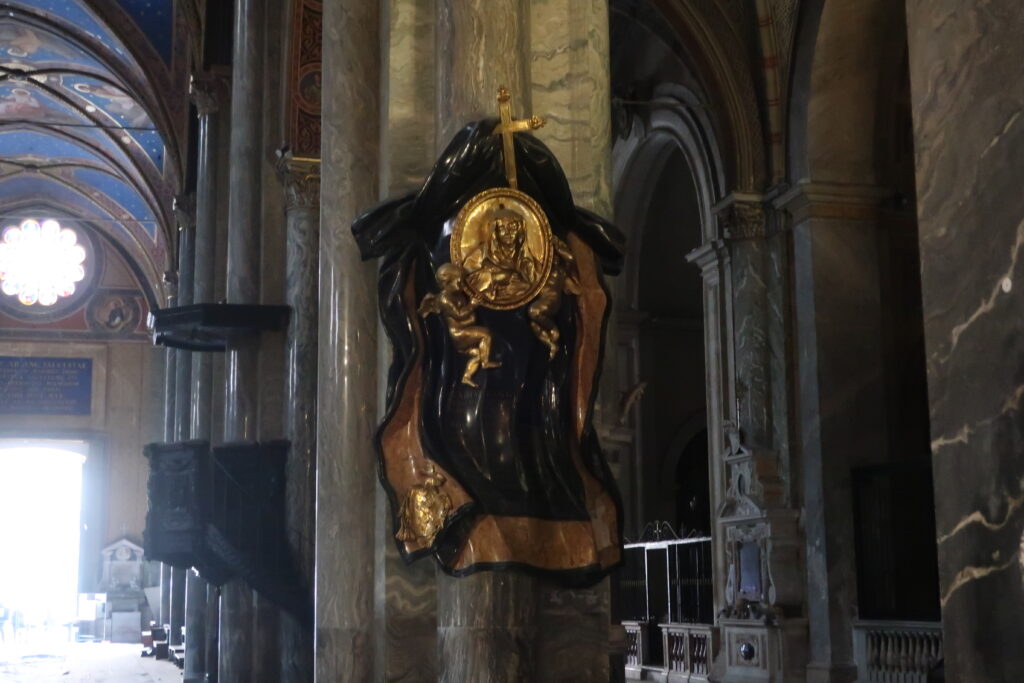
As usual, let's look at Masumi Ishinabe's commentary.
Bernini produced another original work during this period. This is the tomb of Maria Raggi in Santa Maria Soprano Minerva. In designing this tomb, he rejected the architectural structure usually used for tombs, and instead began with the columns.hanging bannerThe medallion representing Maria Raggi was supported by Putto on the curtain.
Biographers say that on her deathbed, Maria Raggi asked for the sign of the cross, saying, "Lord Jesus, receive my soul," and then quietly breathed her last breath, saying the name of Jesus three times in lo. It is thought that Bernini intended to represent this nun on her deathbed, and the medallion depicts her with her hand on her chest, as if she were saying her last words in lo.
And as if hervisual hallucinationThe cross appears as if it were ahanging banneris connected to the columns. Thishanging banneris fluttering in the wind is interpreted as symbolizing that death blows people away.
This work, also finished by a pupil, is of a very high standard. The mixing of techniques and the colorism of Bernini's first-rate technique, in particular the use of yellow stones to edge the marble cloth and gilded bronze for the medallion and putti, is a remarkable success. The textures of the fluttering fabrics rendered in stone show the artist's unusual obsession with making the materials conform to his ideas. A small but highly original and unforgettable tomb.
Until recently, the inscription on this piece led many to believe that it was made in 1643. However, more recent research has revealed that it was made between 1647 and 1653. The transcendental and mysticalideaThis later date would be appropriate in terms of "and representation.
Masumi Ishinabe, Yoshikawa KobunkanBernini, Giant Star of Baroque Art.P123-124
*some line breaks.
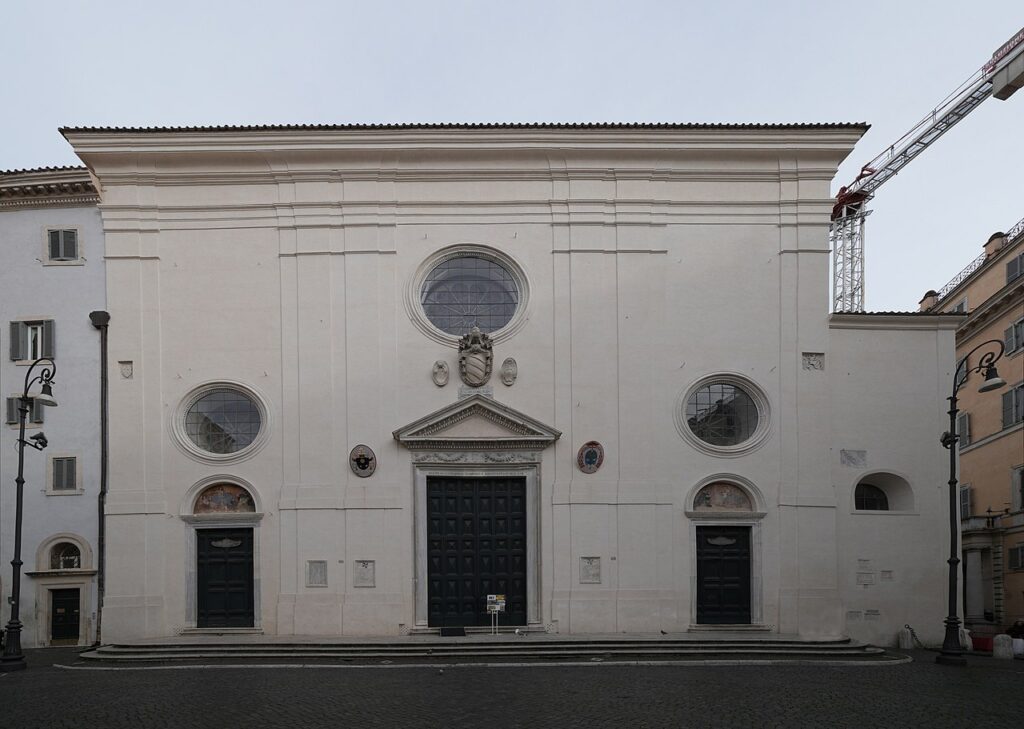
The church of Santa Maria Sopra Minerva, where the "Tomb of Maria Raggi" is located, is just around the corner from the Pantheon. I also visited this church together with the Pantheon.
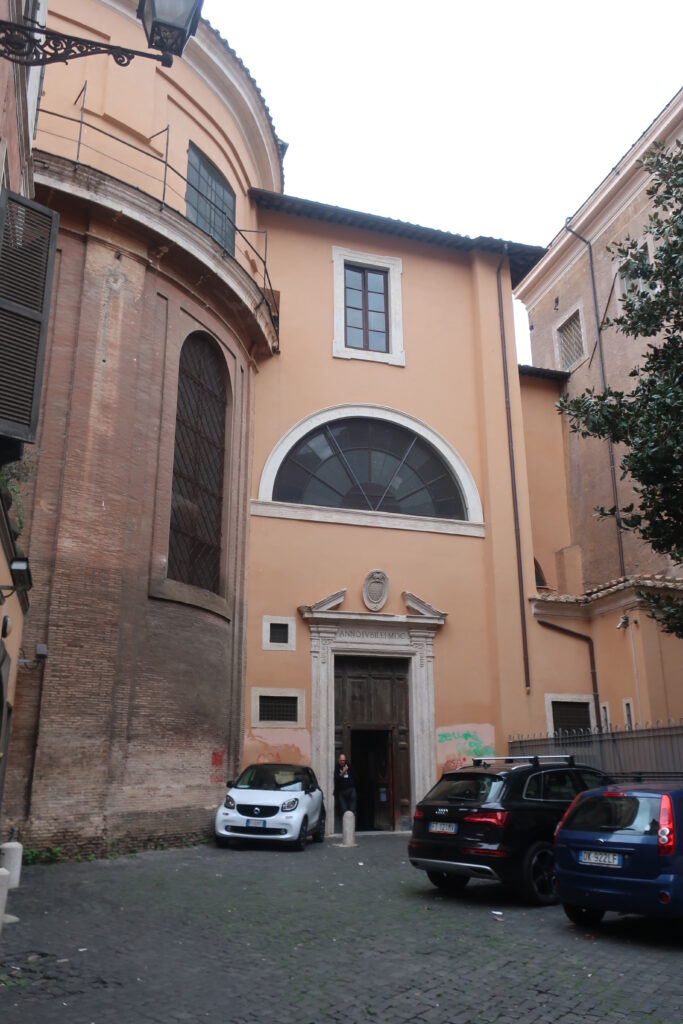
Unfortunately, at the end of November 2023, when I visited, the church was under construction, so I could not enter from the front, and had to enter from the back.
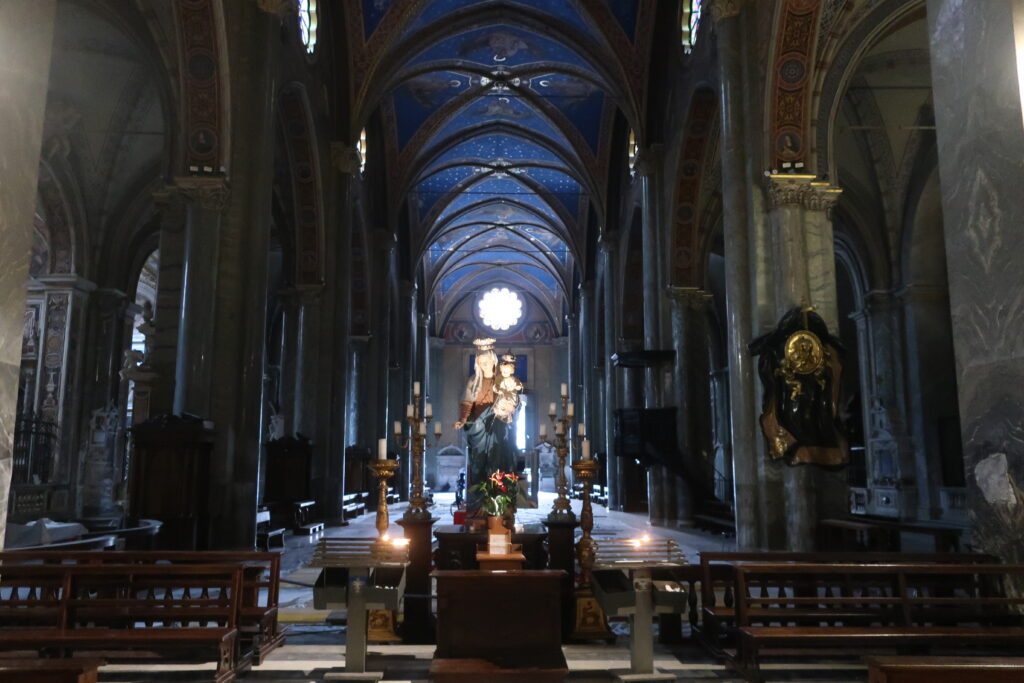
We were able to enter the church, but most of it was off limits due to construction. Thankfully, however, I was able to see "Maria Raggi's Tomb" on the right side of this photo. I could not see it up close, but I was lucky to be able to see it.

Still, it is unique. I was surprised that this is really a sculpture made of stone. The color and the wavy texture are both amazing. The idea of using marble to express a wavy garment is a very original one! It is a common practice in human sculpture to pursue the texture of the garment. However, the audacity of creating a work in which the cloth itself plays the main role is something to take one's hat off to. The combination of colors is also very Bernini-like.
This work, also finished by a pupil, is of a very high standard. The use of yellow stones to edge the marble cloth and the use of gilded bronze for the medallion and putti, Bernini's masterful mixing of techniques and colorism, is a remarkable success, and the texture of the fluttering cloth in stone is an unusual idea of his attempt to make the material conform to his own ideas. The textures of the fluttering fabrics rendered in stone show the artist's unusual obsession with making the materials conform to his ideas. Small but original, it is an unforgettable tomb."
Although it was directly produced by his pupil, Bernini designed and conducted it. I also think it is a wonderful work of Bernini's talent.
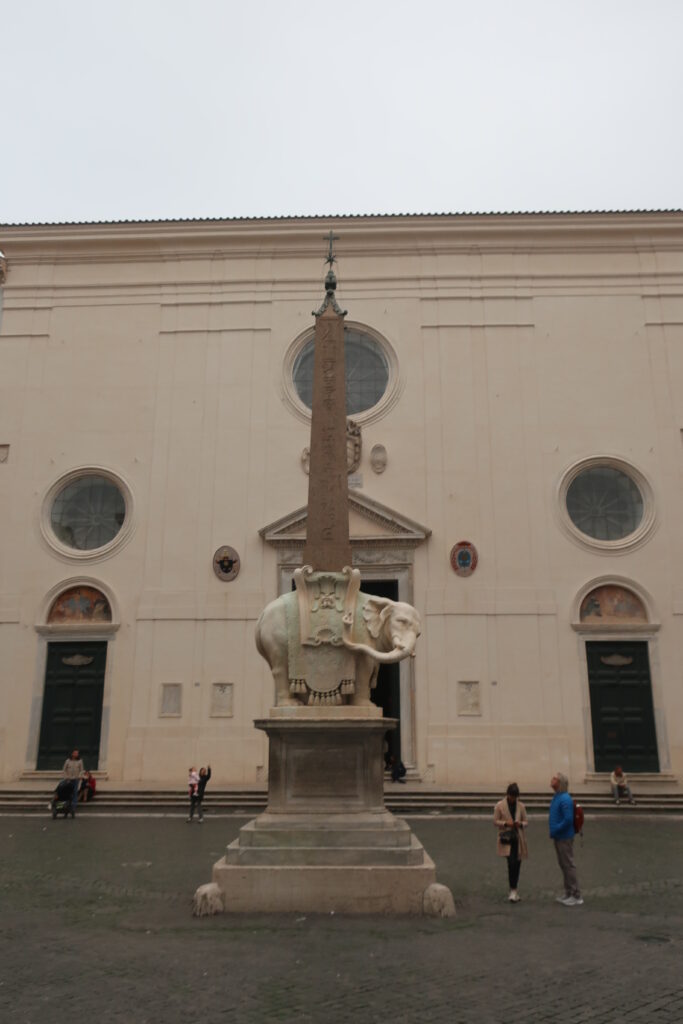
The "Elephant Obelisk" in front of the church of Santa Maria Sopra Minerva was also designed by Bernini, and was commissioned by Pope Alexander VII around 1667.
The humor in this work, in which an obelisk is mounted on an elephant, seems to me to be in perfect harmony with the overly simple exterior of the church of Santa Maria Sopra Minerva. I think this kind of unintentionally heartwarming mischievousness is one of the charms of Bernini's work.
be unbroken
*The following photos are my Bernini notes. I hope you will find them useful.
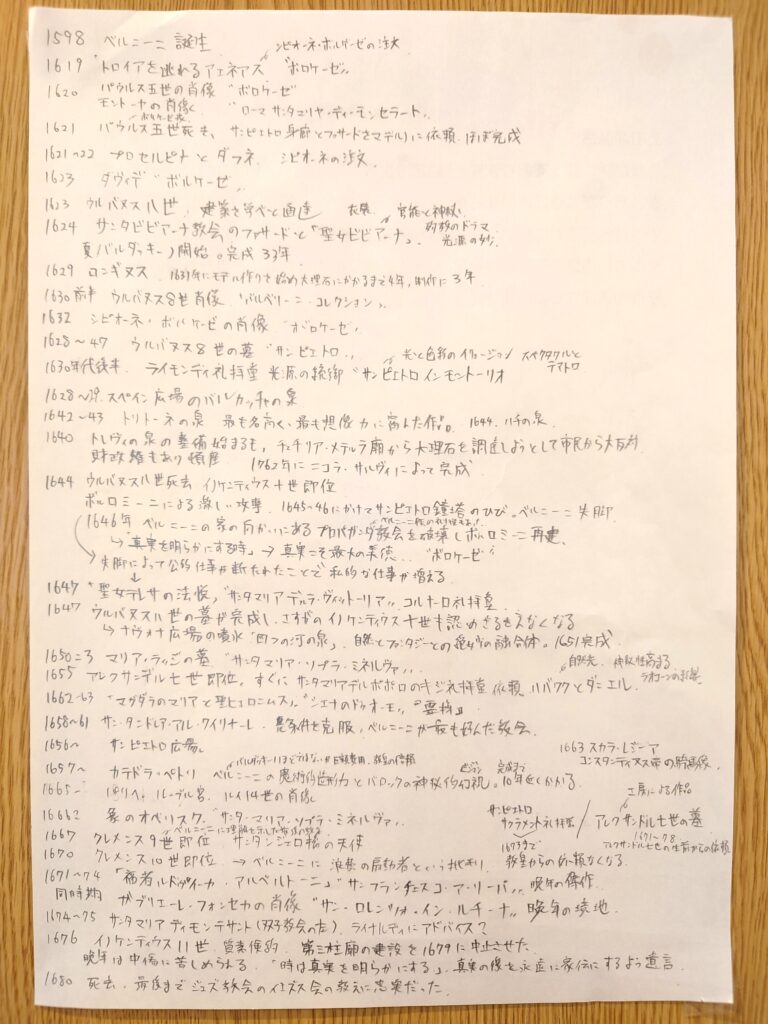
*The list of articles in the "Rome Travel Journal" can be found atCategory page hereindicates direction or goal (e.g. "to")
*Please visit this category page for recommended books to learn about Rome and Italy.
The Rise and Fall of the Roman Empire, the Vatican, and Roman Catholicism."
The Italian Renaissance and the Revolution in Knowledge."
Next Article.
Click here to read the previous article.
Related Articles











